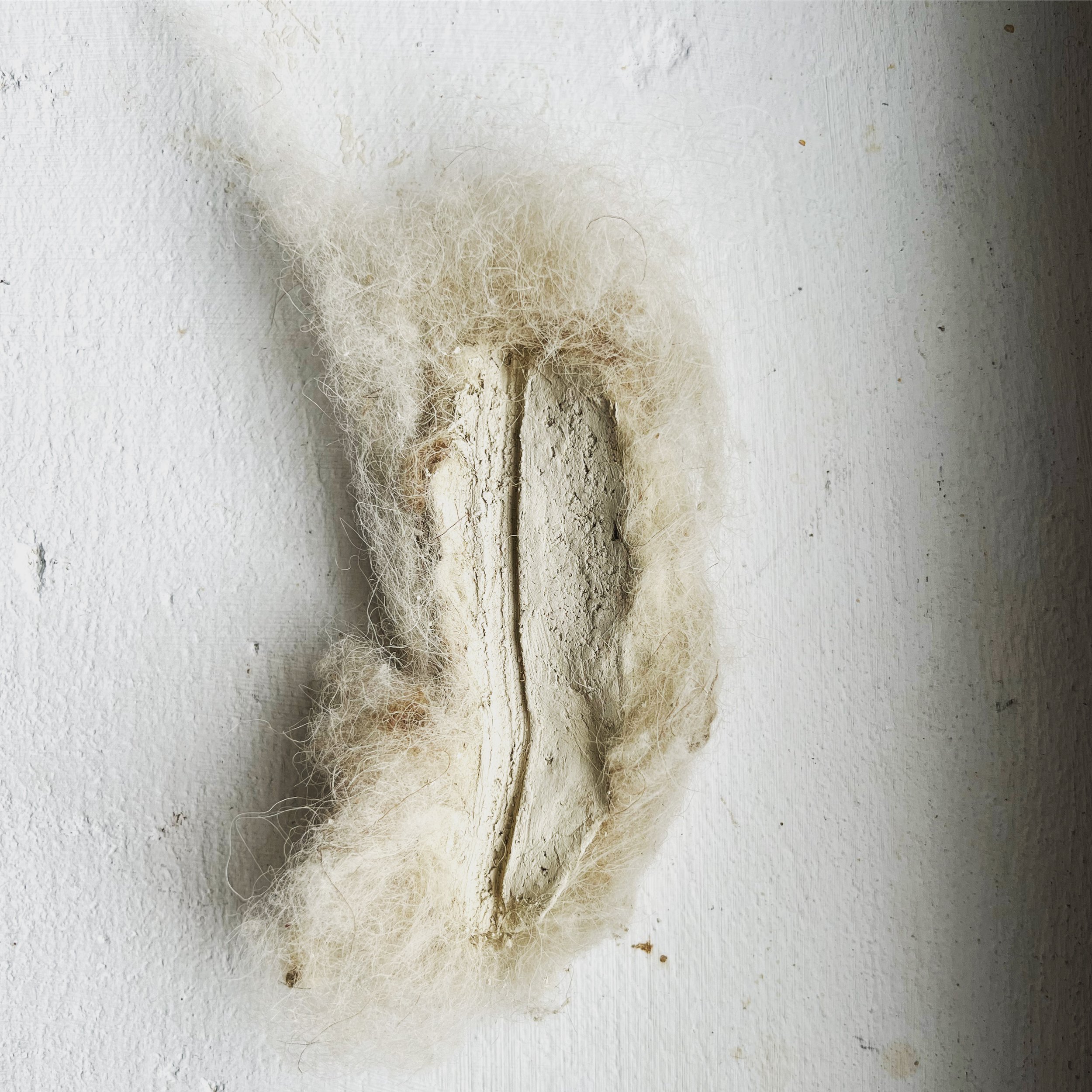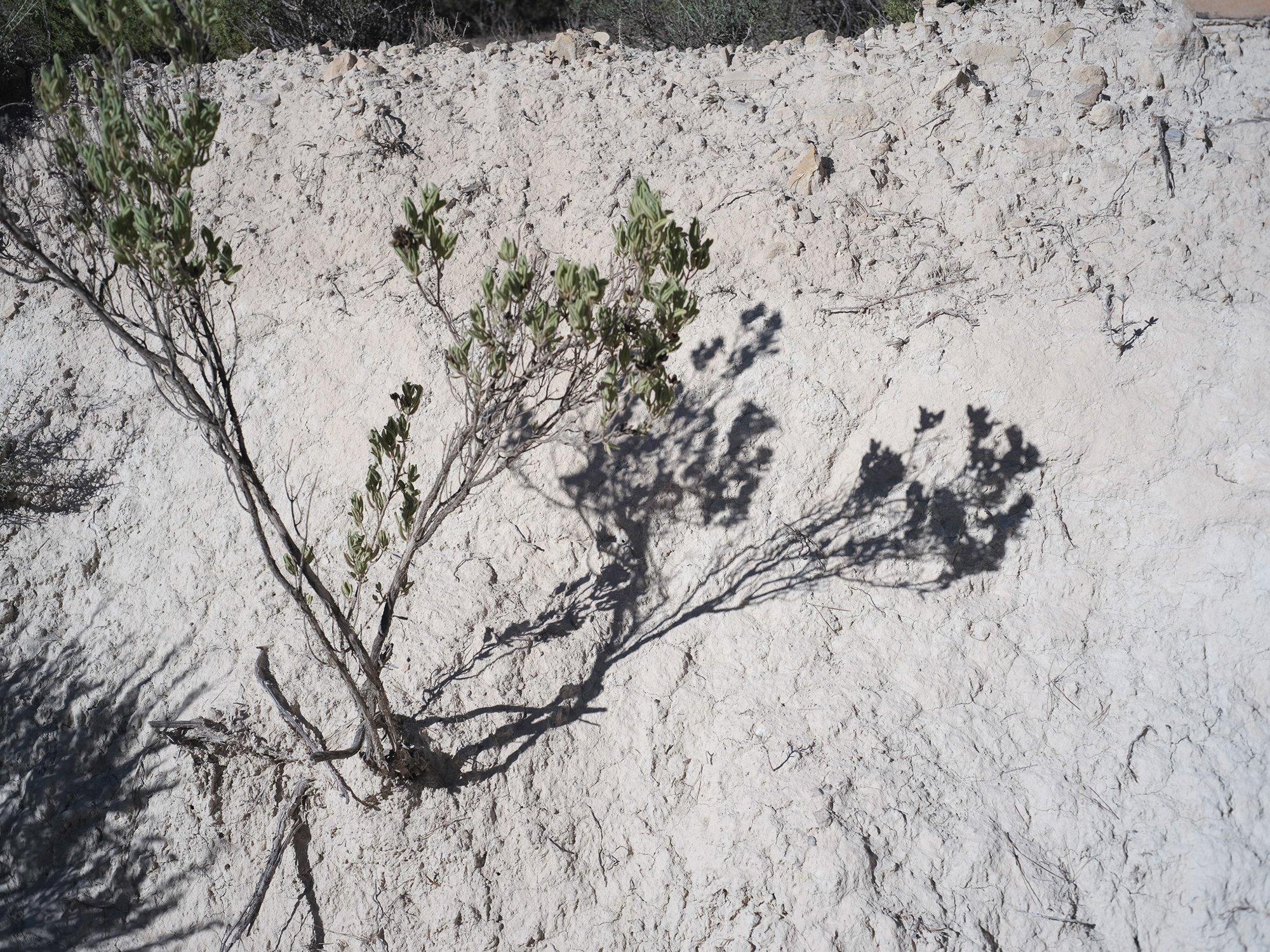Joya: AiR / Tammy Flynn Seybold / CAN
I found my time spent at Joya: AiR was marked by tranquility coupled with creative and intellectual awakening. The spare but gorgeous environs - the cascading terraces, the wide open blue sky, the minimalist building itself - all contributed to an environment that was at once contemplative and invigorating.
Considering myself a mid-life emergent artist, I had wondered if I would feel at home at a residency with other mostly younger, very impressive artists. I needn’t be concerned. I made close artistic and personal connections with the other artists at Joya: AiR that I hope will last a very long time. The diverse oeuvres of the accomplished residents: everything from poetry, weaving and photography, to film and sound capture, provided endless inspiration and surprising areas of intersection.
While at Joya: AiR, my daily routine began with a grounding yoga and meditation session. Having forgot my yoga mat, I chose to use a large piece of raw canvas for my practice instead. I selected a new location each morning, always about 250 m from the JOYA residence, but moving clockwise about 30 degrees each day to total of 12 locations. This practice allowed me to experience the land and its changing use and form in the quiet and introspective way that it deserved.
It was from this more contemplative place that I was able to draw unexpected connections between my 12-part experiential circle to the work of British Economist Kate Haworth who developed the concept of a Doughnut Economy - one in which the success of a society is judged not by an ever-rising GDP, but by a society’s ability to provide the 12 essentials of life (Health, Food, Water, Housing etc) while keeping in mind the ecological ceiling - the limits to which these can be provided to all without causing undo harm to the planet.
Wanting to draw parallels to my 12-day meditation on the surrounding land of JOYA, I used the same piece of raw canvas I used as a yoga mat to create a paint and thread-based piece, including the geographic coordinates of each meditation, and the shape of the rough diagram of the Doughnut Economics model. Without time, space and quiet to pursue this 12-day physical and artistic journey, I don’t think I would have seen the parallels to these economic or sustainability ideals.
Additionally, the time away from both the proverbial and very real noise of everyday life allowed me to pursue my previous series of works in a new and inspiring environment. The time in my large and wonderfully minimalist studio was conducive to small- and large-scale painting, and the comfortable bedroom and common areas were a perfect place for me to work on the embroidery elements of my pieces.
Evenings were spent sharing a bit of wine and catching up with the other artists, providing warmth for the soul and creative spirit. After that we would enjoy a delicious communal meal made with care by Donna.
Coming to JOYA was an experience of a lifetime for me. Especially after the isolation of Covid years, I was so grateful to be somewhere to share ideas, experiences and laughter with other artists. I will carry away with me a profound respect for this once-abandoned land, and for those who inhabit it - whether for 2 weeks, a month or for life. Thank you Simon and Donna for this very special, productive and memorable time.
The final slide of my presentation:
Lessons from my time here at Joya: Art + Ecología:
Trust both instinct and the intellect when trying to recapture creative energy and flow
Hold a place for routine and comfort ( i.e. time sketching, yoga etc.) can lead to unexpected connections down the road - It grounds the body and quiets the mind enough to hear the creative signals and connections, including those from others.
The more grounded foundations you create through routine and meditation/hiking/yoga creates a solid foundation from which you can stretch and take risks
Trust the process
Even greater sense of gratitude
Tammy Flynn Sybold
M.A.C. 1990 Master of Art Conservation, Paintings Specialization
Queen’s University Art Conservation Program, Kingston, Canada.
B.A. 1988 Bachelor of Arts, History of Art, University of California at Berkeley.
CONSERVATION EXPERIENCE
1990 - 2018 Conservator of Paintings
Tammy has had a 28-year career as a paintings conservator, with a specialty in 20th Century and Contemporary Art. She has worked at the National Gallery of Art in Washington, the Art Gallery of Ontario, The Power Plant in Toronto and the Vancouver Art Gallery.
HONOURS Dean’s List, University of California at Berkeley
Dean’s Award Recipient, Queen’s University 1988 and 1989
Samuel H. Kress Fellowship Recipient, Faelleskonserveringen, Denmark, 1990.
Getty Grant Recipient, National Gallery of Art, Washington, 1990.
Samuel H. Kress Fellowship Recipient, SFMOMA, 1991
Samuel H. Kress Fellowship Recipient, SFMOMA 1992.













































































